Building Energy Performance Modeling through Regression Analysis: A Case of Tyree Energy Technologies Building at UNSW Sydney
Abstract
1. Introduction
1.1. Introduction
1.2. Problem Definition
1.3. Objectives
2. Literature Review
2.1. Implementing BIM in Green Building Design and Construction
2.1.1. Background of BIM Development in Green Construction
2.1.2. Energy Simulation by BIM
2.2. Research Gap and Challenges for BIM-Based Energy Simulation
2.2.1. Limitations of Using BIM Tools
2.2.2. Future Work Directions of BIM
2.3. Multiple Linear Regression (MLR) Models of Energy Simulation
2.3.1. Background
2.3.2. Application in Building Energy Simulation
2.3.3. Limitations of Multiple Linear Regression Models (MLR)
2.3.4. Future Work Direction of MLR
2.4. Energy Regression Analysis Combine with BIM Tools
2.4.1. Necessity for MLR Combine with BIM
2.4.2. Summary of Relevant Case Study
2.5. Comparative Study between Existing Building Energy Studies and IDEA Model
2.6. Literature Summary and Critical Review
3. Materials and Methods
3.1. Tools
3.2. Building Elements, Properties, and Energy Settings
3.3. Autodesk Insight 360
3.4. Autodesk Green Building Studio (GBS)
3.5. Case Study
4. Obtaining, Filtering Data, and Performing Statistical Analysis
4.1. Introduction
4.2. Tools
4.3. Building Variables
4.4. Linear Regression Model
- is the predicted value of the dependent variable;
- is the independent variable;
- is the intercept, which is the predicted value of when ;
- is the estimated regression coefficient, it decides the trend and the correlation strength between and ;
- is the error of the estimate.
- is the predicted value of the dependent variable;
- are the independent variables;
- is the intercept, which is the predicted value of when ;
- are the estimated regression coefficients, each of them decides the trend and the correlation strength between and individually;
- is the error of the estimate.
4.5. Statistical Indicators
5. Simulation Results
5.1. Introduction
5.2. Energy Simulation Results
5.2.1. EUI vs. Selected Building Variables
5.2.2. Correlation Analysis for WWR
5.2.3. Interactions between Shapes and Building Variables
5.3. Simply Linear Regression
5.3.1. Wall Construction Type
5.3.2. Roof Construction Type
5.3.3. Plug Load Efficiency
5.3.4. Lighting Efficiency
5.3.5. Infiltration Rate
5.4. Parametric Analysis
5.5. Validation and Error
6. Conclusions, Recommendations, and Future Research
Author Contributions
Funding
Data Availability Statement
Conflicts of Interest
Abbreviations
| BCA | Building Codes of Australia |
| BIM | Building Information Modelling |
| BRI | Building Orientation |
| DOC | Daylighting and Occupancy control |
| GBS | Autodesk Green Building Studio |
| INF | Infiltration Rate |
| LIG | Lighting Efficiency |
| MLR | Multi-Linear Regression |
| OPS | Operating Schedule |
| PLE | Plug Load Efficiency |
| RCT | Roof Construction Type |
| RMSE | Root Mean Square Error |
| TETB | Tyree Energy and Technologies Building |
| UNSW | University of New South Wales |
| WCT | Wall Construction Rate |
| WWR | Window-to-Wall Ratio |
References
- Abanda, F.; Byers, L. An investigation of the impact of building orientation on energy consumption in a domestic building using emerging BIM (Building Information Modelling). Energy 2016, 97, 517–527. [Google Scholar] [CrossRef]
- Zhang, C.; Nizam, R.S.; Tian, L. BIM-based investigation of total energy consumption in delivering building products. Adv. Eng. Informatics 2018, 38, 370–380. [Google Scholar] [CrossRef]
- Shirowzhan, S.; Sepasgozar, S.M.; Edwards, D.J.; Li, H.; Wang, C. BIM compatibility and its differentiation with interoperability challenges as an innovation factor. Autom. Constr. 2020, 112, 103086. [Google Scholar] [CrossRef]
- Sepasgozar, S.; Karimi, R.; Farahzadi, L.; Moezzi, F.; Shirowzhan, S.; Ebrahimzadeh, S.M.; Hui, F.; Aye, L. A Systematic Content Review of Artificial Intelligence and the Internet of Things Applications in Smart Home. Appl. Sci. 2020, 10, 3074. [Google Scholar] [CrossRef]
- López-Pérez, L.A.; Flores-Prieto, J.J. Adaptive thermal comfort approach to save energy in tropical climate educational building by artificial intelligence. Energy 2023, 263, 125706. [Google Scholar] [CrossRef]
- Balcilar, M.; Uzuner, G.; Nwani, C.; Bekun, F.V. Boosting Energy Efficiency in Turkey: The Role of Public–Private Partnership Investment. Sustainability 2023, 15, 2273. [Google Scholar] [CrossRef]
- Liu, B.; Rosenberg, M.; Athalye, R. National Impact Of ANSI/ASHRAE/IES Standard 90.1-2016. In Proceedings of the 2018 Building Performance Analysis Conference and SimBuild, Chicago, IL, USA, 26–28 September 2018. [Google Scholar]
- Mazria, E.; Kershner, K. Meeting the 2030 Challenge through Building Codes; Architecture 2030: Santa Fe, NM, USA, 2008; Available online: https://sallan.org/pdf-docs/2030Challenge_Codes_WP-1.pdf (accessed on 19 October 2022).
- Fu, H.; Baltazar, J.-C.; Claridge, D.E. Review of developments in whole-building statistical energy consumption models for commercial buildings. Renew. Sustain. Energy Rev. 2021, 147, 111248. [Google Scholar] [CrossRef]
- Ferrandiz, J.; Banawi, A.; Peña, E. Evaluating the benefits of introducing “BIM” based on Revit in construction courses, without changing the course schedule. Univers. Access Inf. Soc. 2018, 17, 491–501. [Google Scholar] [CrossRef]
- Succar, B. Building information modelling framework: A research and delivery foundation for industry stakeholders. Autom. Constr. 2009, 18, 357–375. [Google Scholar] [CrossRef]
- Abanda, F.H.; Vidalakis, C.; Oti, A.H.; Tah, J.H. A critical analysis of Building Information Modelling systems used in construction projects. Adv. Eng. Softw. 2015, 90, 183–201. [Google Scholar] [CrossRef]
- Wong, J.K.W.; Zhou, J. Enhancing environmental sustainability over building life cycles through green BIM: A review. Autom. Constr. 2015, 57, 156–165. [Google Scholar] [CrossRef]
- Gao, H.; Zhang, L.; Koch, C.; Wu, Y. BIM-based real time building energy simulation and optimization in early design stage. IOP Conf. Ser. Mater. Sci. Eng. 2019, 556, 012064. [Google Scholar] [CrossRef]
- Kamel, E.; Memari, A.M. Review of BIM’s application in energy simulation: Tools, issues, and solutions. Autom. Constr. 2019, 97, 164–180. [Google Scholar] [CrossRef]
- Chong, H.-Y.; Lee, C.-Y.; Wang, X. A mixed review of the adoption of Building Information Modelling (BIM) for sustainability. J. Clean. Prod. 2017, 142, 4114–4126. [Google Scholar] [CrossRef][Green Version]
- Lu, Y.; Wu, Z.; Chang, R.; Li, Y. Building Information Modeling (BIM) for green buildings: A critical review and future directions. Autom. Constr. 2017, 83, 134–148. [Google Scholar] [CrossRef]
- Catalina, T.; Iordache, V.; Caracaleanu, B. Multiple regression model for fast prediction of the heating energy demand. Energy Build. 2013, 57, 302–312. [Google Scholar] [CrossRef]
- Braun, M.; Altan, H.; Beck, S. Using regression analysis to predict the future energy consumption of a supermarket in the UK. Appl. Energy 2014, 130, 305–313. [Google Scholar] [CrossRef][Green Version]
- Walter, T.; Sohn, M.D. A regression-based approach to estimating retrofit savings using the Building Performance Database. Appl. Energy 2016, 179, 996–1005. [Google Scholar] [CrossRef][Green Version]
- Martinez, A.; Choi, J.-H. Analysis of energy impacts of facade-inclusive retrofit strategies, compared to system-only retrofits using regression models. Energy Build. 2018, 158, 261–267. [Google Scholar] [CrossRef]
- Jaffal, I.; Inard, C.; Bozonnet, E. Toward integrated building design: A parametric method for evaluating heating demand. Appl. Therm. Eng. 2012, 40, 267–274. [Google Scholar] [CrossRef]
- Lam, J.C.; Wan, K.K.; Liu, D.; Tsang, C. Multiple regression models for energy use in air-conditioned office buildings in different climates. Energy Convers. Manag. 2010, 51, 2692–2697. [Google Scholar] [CrossRef]
- Mottahedi, M.; Mohammadpour, A.; Amiri, S.S.; Riley, D.; Asadi, S. Multi-linear Regression Models to Predict the Annual Energy Consumption of an Office Building with Different Shapes. Procedia Eng. 2015, 118, 622–629. [Google Scholar] [CrossRef]
- Yildiz, B.; Bilbao, J.; Sproul, A. A review and analysis of regression and machine learning models on commercial building electricity load forecasting. Renew. Sustain. Energy Rev. 2017, 73, 1104–1122. [Google Scholar] [CrossRef]
- Choi, J.; Shin, J.; Kim, M.; Kim, I. Development of openBIM-based energy analysis software to improve the interoperability of energy performance assessment. Autom. Constr. 2016, 72, 52–64. [Google Scholar] [CrossRef]
- Pinheiro, S.; Wimmer, R.; O’Donnell, J.; Muhic, S.; Bazjanac, V.; Maile, T.; Frisch, J.; van Treeck, C. MVD based information exchange between BIM and building energy performance simulation. Autom. Constr. 2018, 90, 91–103. [Google Scholar] [CrossRef][Green Version]
- Liu, X.; Akinci, B.; Bergés, M.; Garrett, J.H. Extending the information delivery manual approach to identify information requirements for performance analysis of HVAC systems. Adv. Eng. Inform. 2013, 27, 496–505. [Google Scholar] [CrossRef]
- Asadi, S.; Amiri, S.S.; Mottahedi, M. On the development of multi-linear regression analysis to assess energy consumption in the early stages of building design. Energy Build. 2014, 85, 246–255. [Google Scholar] [CrossRef]
- Aghdaei, N.; Kokogiannakis, G.; Daly, D.; McCarthy, T. Linear regression models for prediction of annual heating and cooling demand in representative Australian residential dwellings. Energy Procedia 2017, 121, 79–86. [Google Scholar] [CrossRef]
- González, J.; Soares, C.A.P.; Najjar, M.; Haddad, A.N. BIM and BEM Methodologies Integration in Energy-Efficient Buildings Using Experimental Design. Buildings 2021, 11, 491. [Google Scholar] [CrossRef]
- Huo, T.; Ren, H.; Zhang, X.; Cai, W.; Feng, W.; Zhou, N.; Wang, X. China’s energy consumption in the building sector: A Statistical Yearbook-Energy Balance Sheet based splitting method. J. Clean. Prod. 2018, 185, 665–679. [Google Scholar] [CrossRef]
- Huo, T.; Xu, L.; Liu, B.; Cai, W.; Feng, W. China’s commercial building carbon emissions toward 2060: An integrated dynamic emission assessment model. Appl. Energy 2022, 325, 119828. [Google Scholar] [CrossRef]
- Huo, T.; Ma, Y.; Xu, L.; Feng, W.; Cai, W. Carbon emissions in China’s urban residential building sector through 2060: A dynamic scenario simulation. Energy 2022, 254, 124395. [Google Scholar] [CrossRef]
- Onstott, S. AutoCAD 2015 and AutoCAD LT 2015 Essentials: Autodesk Official Press; John Wiley & Sons: Hoboken, NJ, USA, 2014. [Google Scholar]
- Kirby, L.; Krygiel, E.; Kim, M. Mastering Autodesk Revit 2018; John Wiley & Sons: Hoboken, NJ, USA, 2017. [Google Scholar]
- Maglad, A.M.; Houda, M.; Alrowais, R.; Khan, A.M.; Jameel, M.; Rehman, S.K.U.; Khan, H.; Javed, M.F.; Rehman, M.F. Bim-based energy analysis and optimization using insight 360 (case study). Case Stud. Constr. Mater. 2023, 18, e01755. [Google Scholar] [CrossRef]
- STUDIO, Green Building. Autodesk Green Building Studio. 2008. Available online: https://damassets.autodesk.net/content/dam/autodesk/www/industries/education/docs/Access-GBS-2014-New.pdf (accessed on 19 October 2022).
- Nardi, I.; Paoletti, D.; Ambrosini, D.; de Rubeis, T.; Sfarra, S. U-value assessment by infrared thermography: A comparison of different calculation methods in a Guarded Hot Box. Energy Build. 2016, 122, 211–221. [Google Scholar] [CrossRef]
- Islam, M.H.; Safayet, M.A.; Al Mamun, A. Building performance analysis for optimizing the energy consumption of an educational building. Int. J. Build. Pathol. Adapt. 2022. ahead of print. [Google Scholar] [CrossRef]
- Li, Y.; Deng, X.; Ba, S.; Myers, W.R.; Brenneman, W.A.; Lange, S.J.; Zink, R.; Jin, R. Cluster-based data filtering for manufacturing big data systems. J. Qual. Technol. 2021, 54, 290–302. [Google Scholar] [CrossRef]
- Etter, D.M.; Kuncicky, D.C.; Hull, D.W. Introduction to MATLAB; Prentice Hall: Hoboken, NJ, USA, 2002; Volume 4. [Google Scholar]
- Montgomery, D.C.; Peck, E.A.; Vining, G.G. Introduction to Linear Regression Analysis; John Wiley & Sons: Hoboken, NJ, USA, 2021. [Google Scholar]
- Weisberg, S. Applied Linear Regression; John Wiley & Sons: Hoboken, NJ, USA, 2005; Volume 528. [Google Scholar] [CrossRef]
- Ansari, F.A.; Mokhtar, A.S.; Abbas, K.A.; Adam, N.M. A Simple Approach for Building Cooling Load Estimation. Am. J. Environ. Sci. 2005, 1, 209–212. [Google Scholar] [CrossRef][Green Version]
- Dhar, A.; Reddy, T.A.; Claridge, D.E. A Fourier Series Model to Predict Hourly Heating and Cooling Energy Use in Commercial Buildings With Outdoor Temperature as the Only Weather Variable. J. Sol. Energy Eng. 1999, 121, 47–53. [Google Scholar] [CrossRef]
- Kialashaki, A.; Reisel, J.R. Modeling of the energy demand of the residential sector in the United States using regression models and artificial neural networks. Appl. Energy 2013, 108, 271–280. [Google Scholar] [CrossRef]
- Aydinalp-Koksal, M.; Ugursal, V.I. Comparison of neural network, conditional demand analysis, and engineering approaches for modeling end-use energy consumption in the residential sector. Appl. Energy 2008, 85, 271–296. [Google Scholar] [CrossRef]
- Ciulla, G.; D’Amico, A. Building energy performance forecasting: A multiple linear regression approach. Appl. Energy 2019, 253, 113500. [Google Scholar] [CrossRef]
- Burgun, F.; Bilbao, J.; Sproul, A.; Partridge, L.; Lowndes, P.; Pardon, J. First energy performance results of a university building and comparison to environmental rating simulation data. Innovation 2013, 5, 1. [Google Scholar]
- UNSW. UNSW Design and Construction Requirements 08-Part 3.2 Lighting (Rev 6); UNSW: Kensington, Australia, 2018. [Google Scholar]
- Dunn, G.; Knight, I. Small power equipment loads in UK office environments. Energy Build. 2005, 37, 87–91. [Google Scholar] [CrossRef]
- Speert, J.; Legge, C. Informed Mechanical Design Through Tested Air Leakage Rates. In Proceedings of the Building Enclosure Science & Technology (BEST3) Conference, Atlanta, GA, USA, 2–4 April 2012. [Google Scholar]
- Garcia, E.G.; Zhu, Z. Interoperability from building design to building energy modeling. J. Build. Eng. 2015, 1, 33–41. [Google Scholar] [CrossRef]
- Alothman, A.; Ashour, S.; Krishnaraj, L. Energy Performance Analysis of Building for Sustainable Design Using Bim: A Case Study on Institute Building. Int. J. Renew. Energy Res. 2021, 11, 556–565. [Google Scholar] [CrossRef]
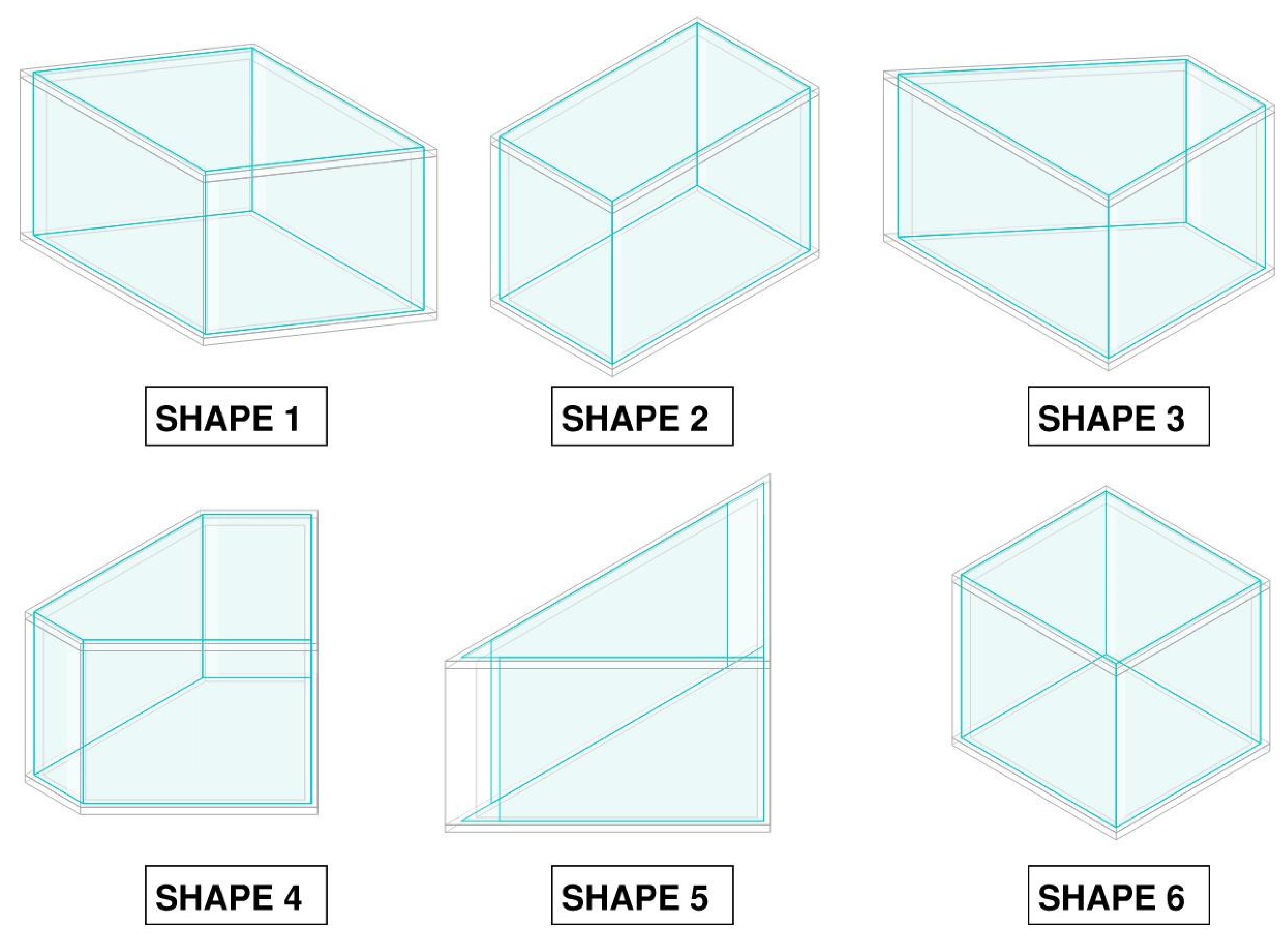


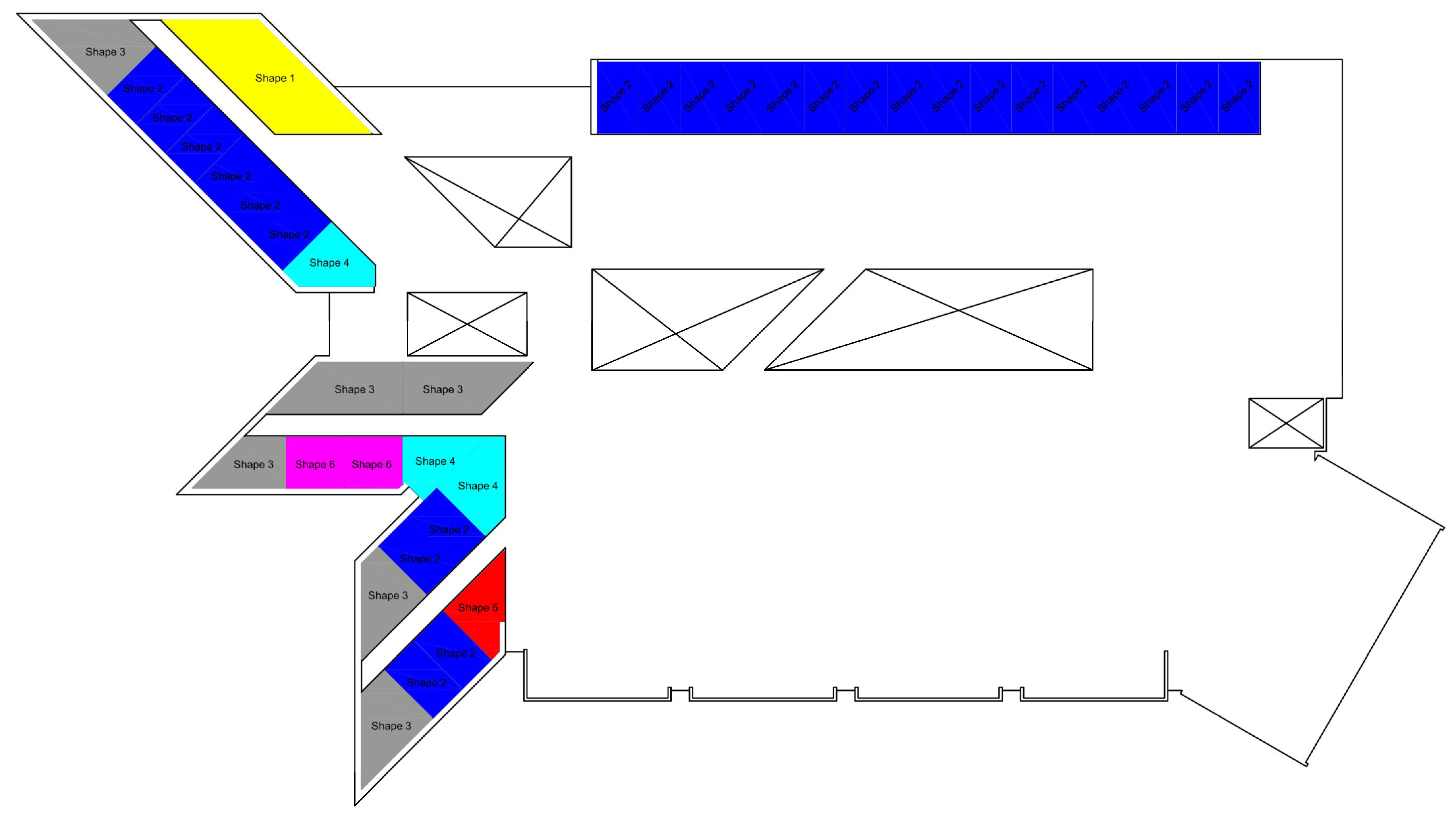
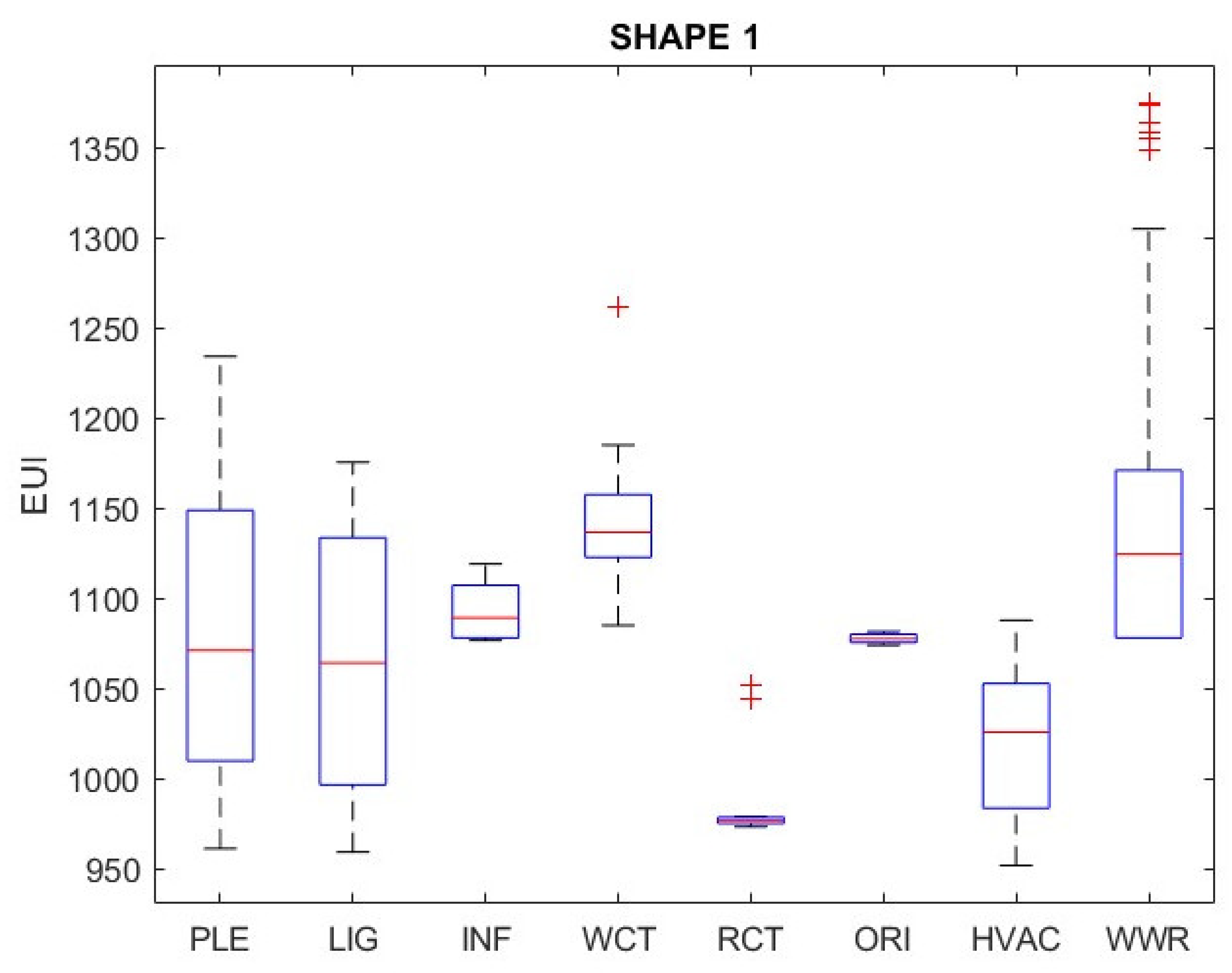
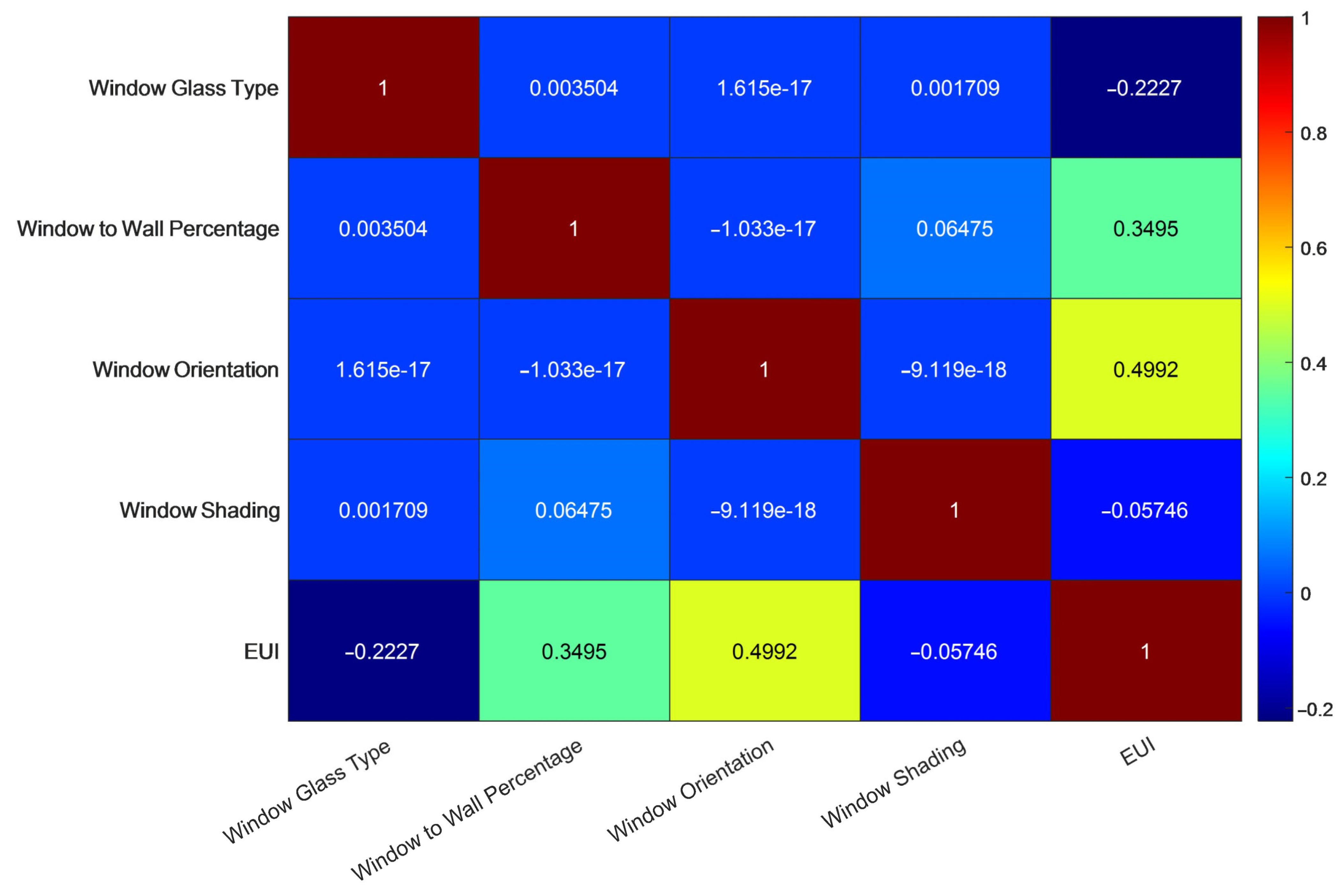



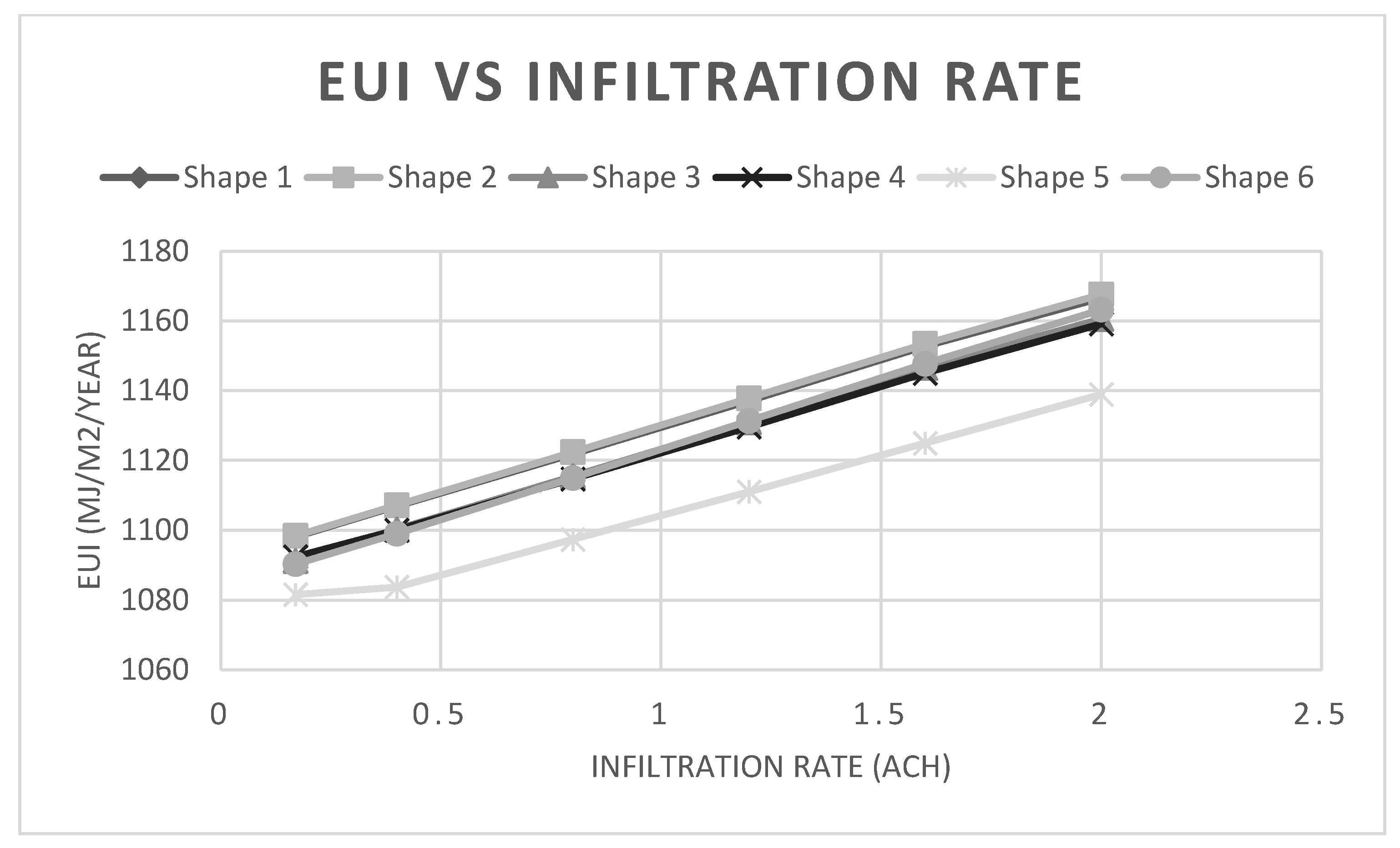









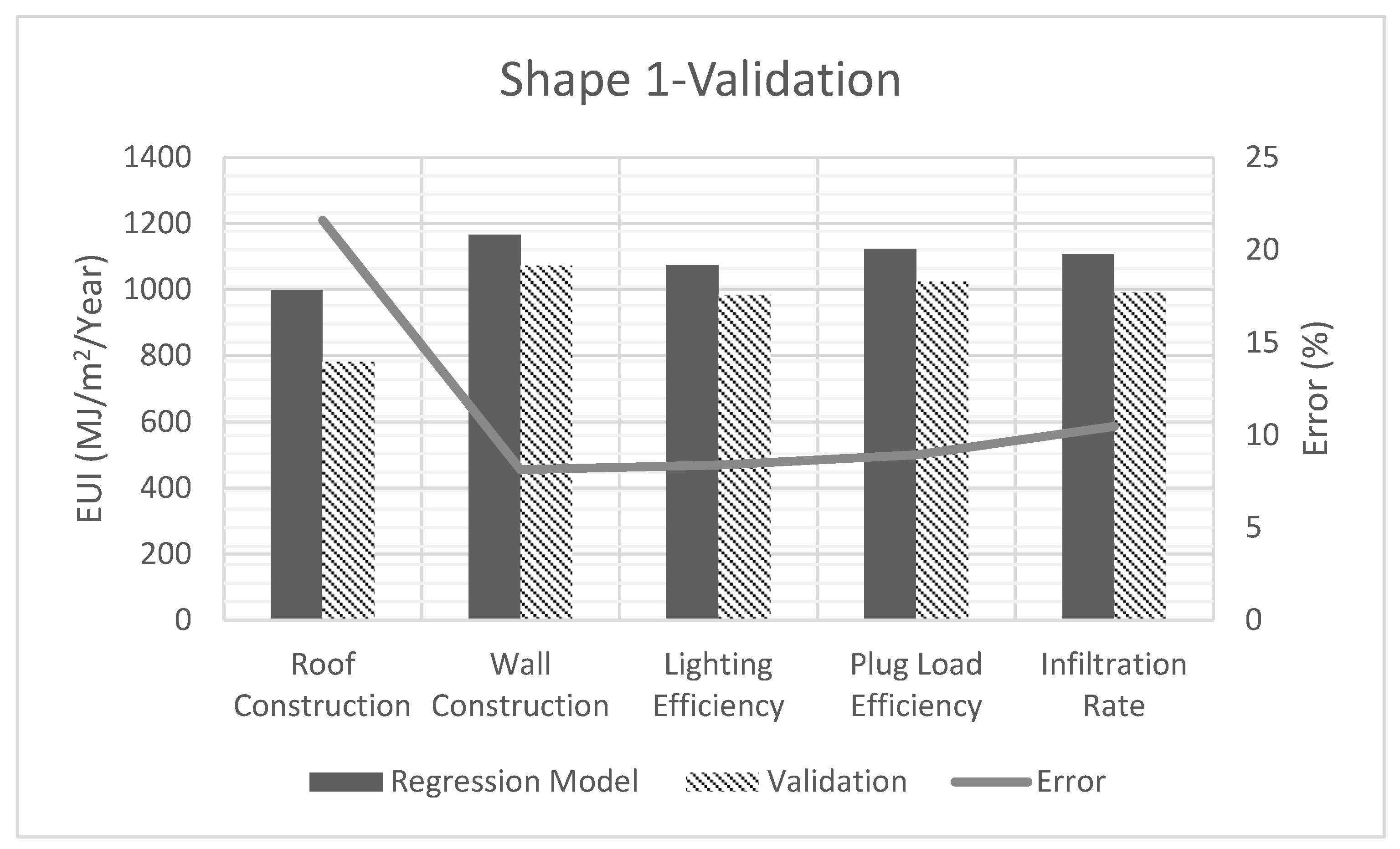
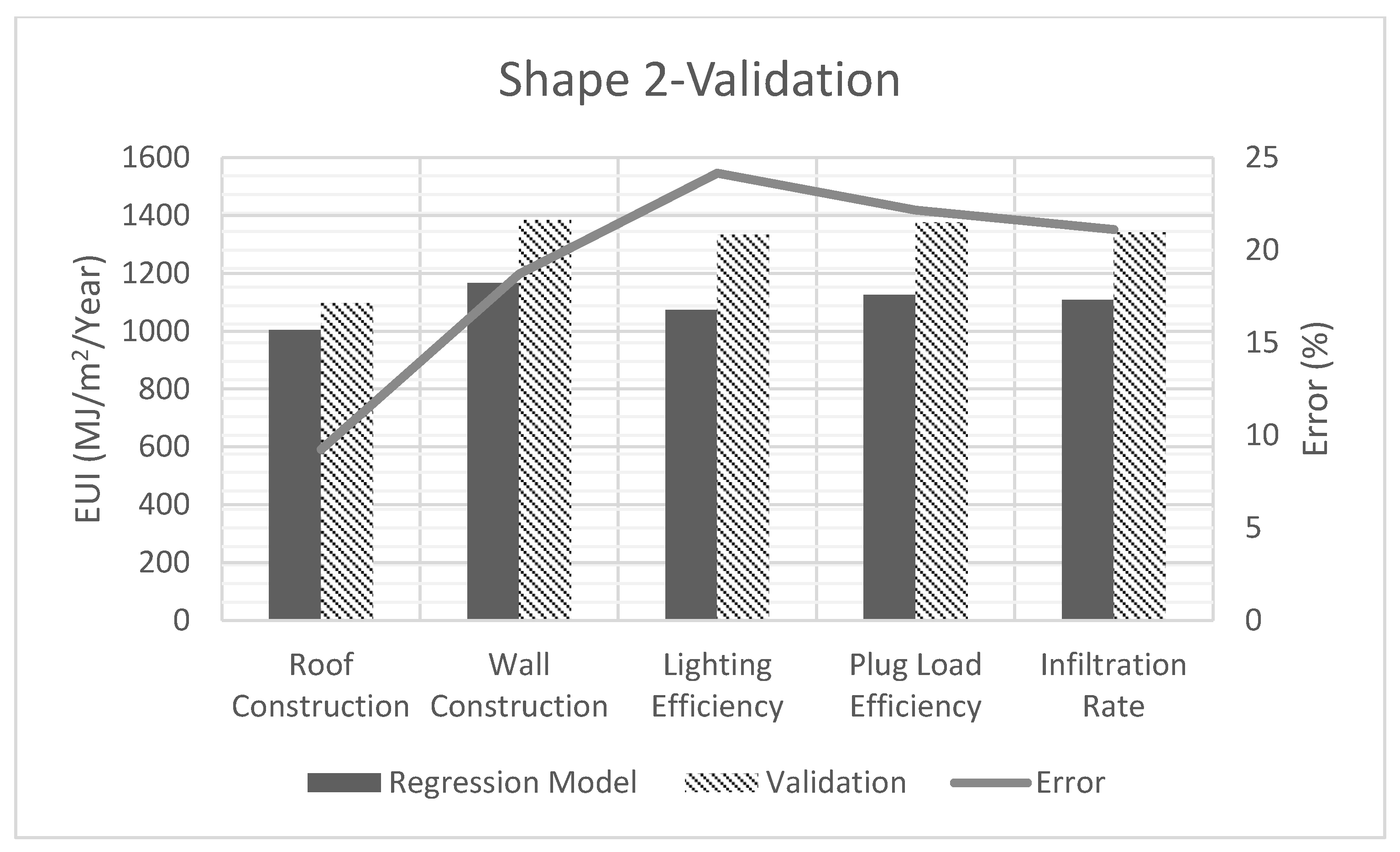
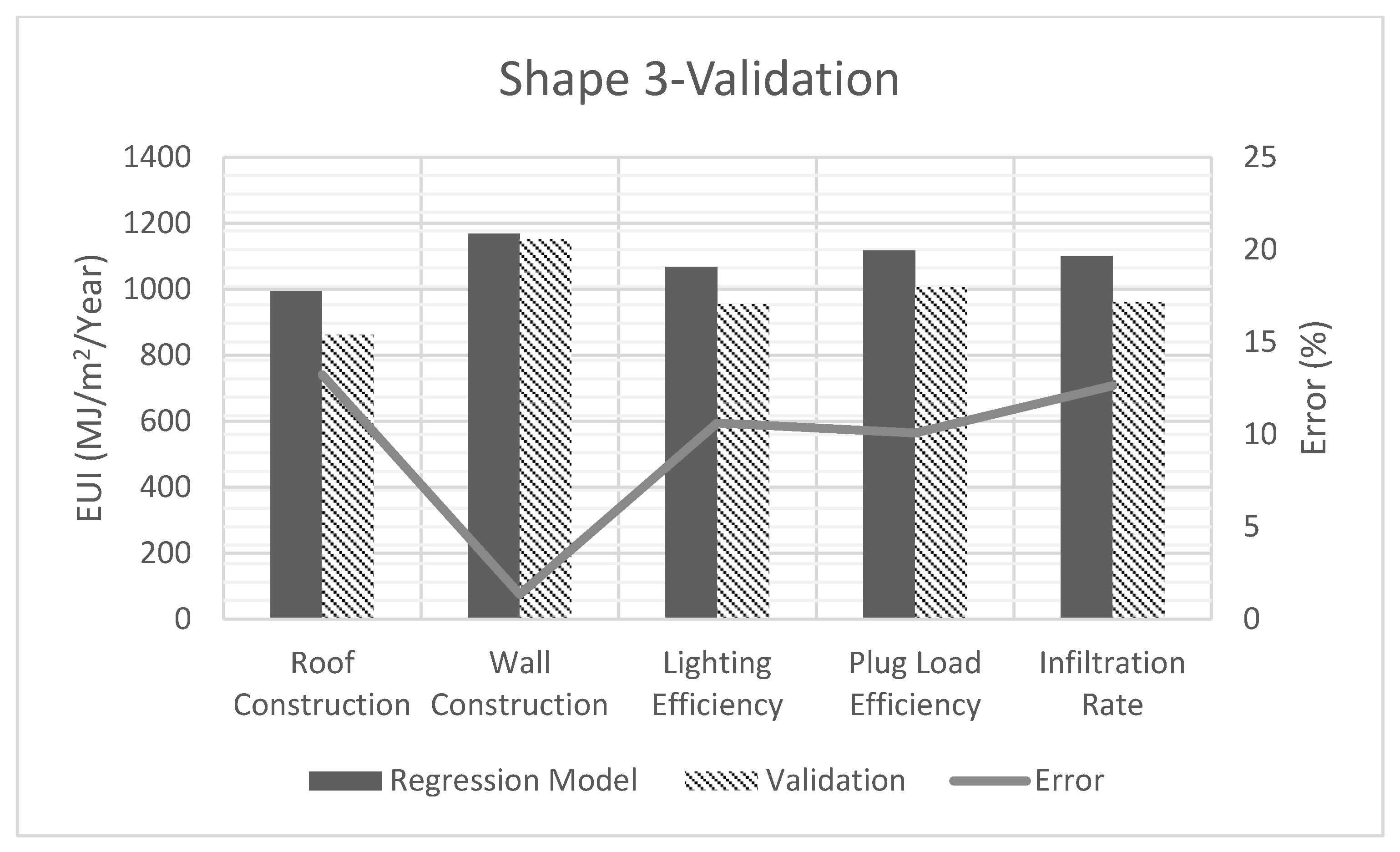
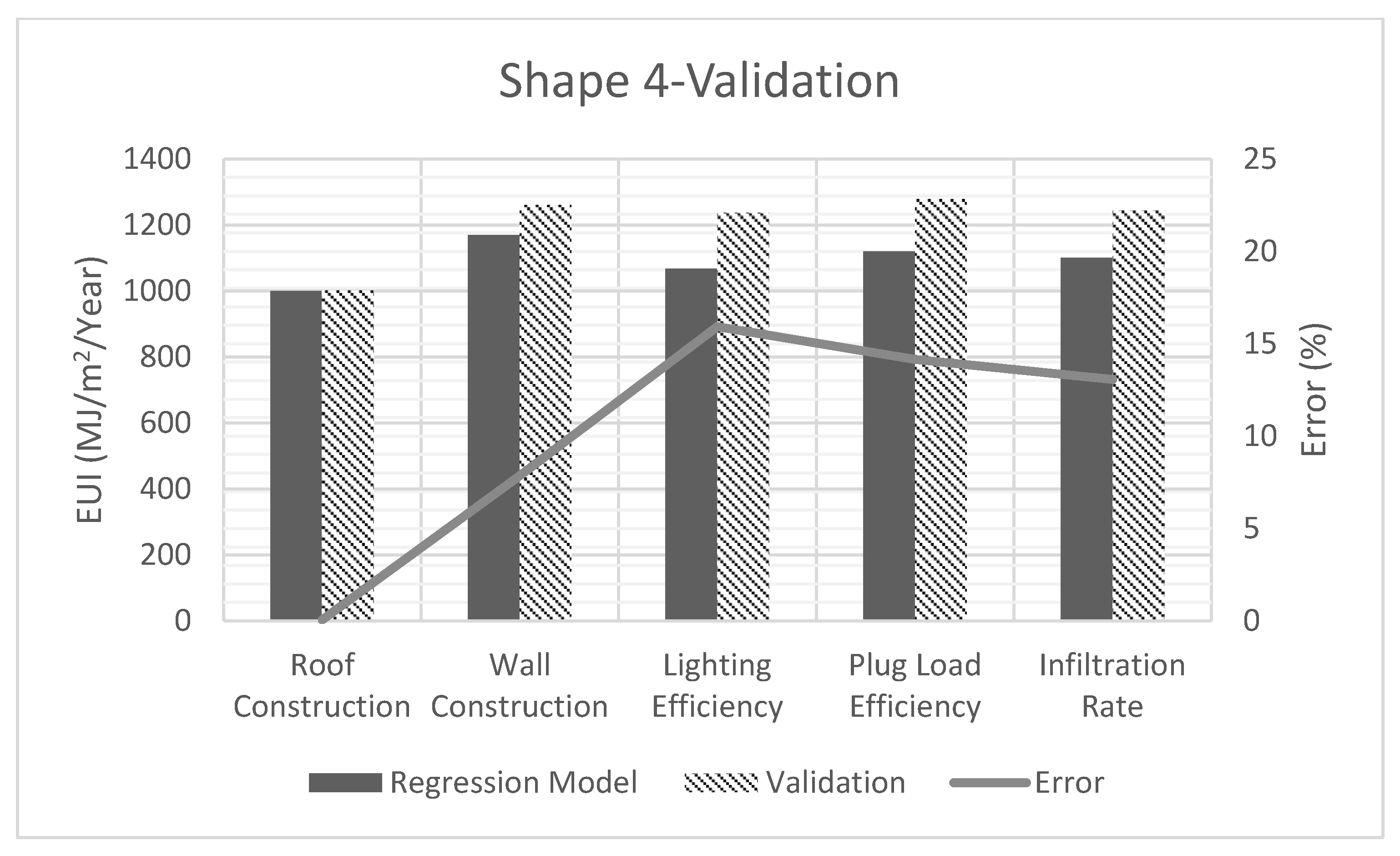
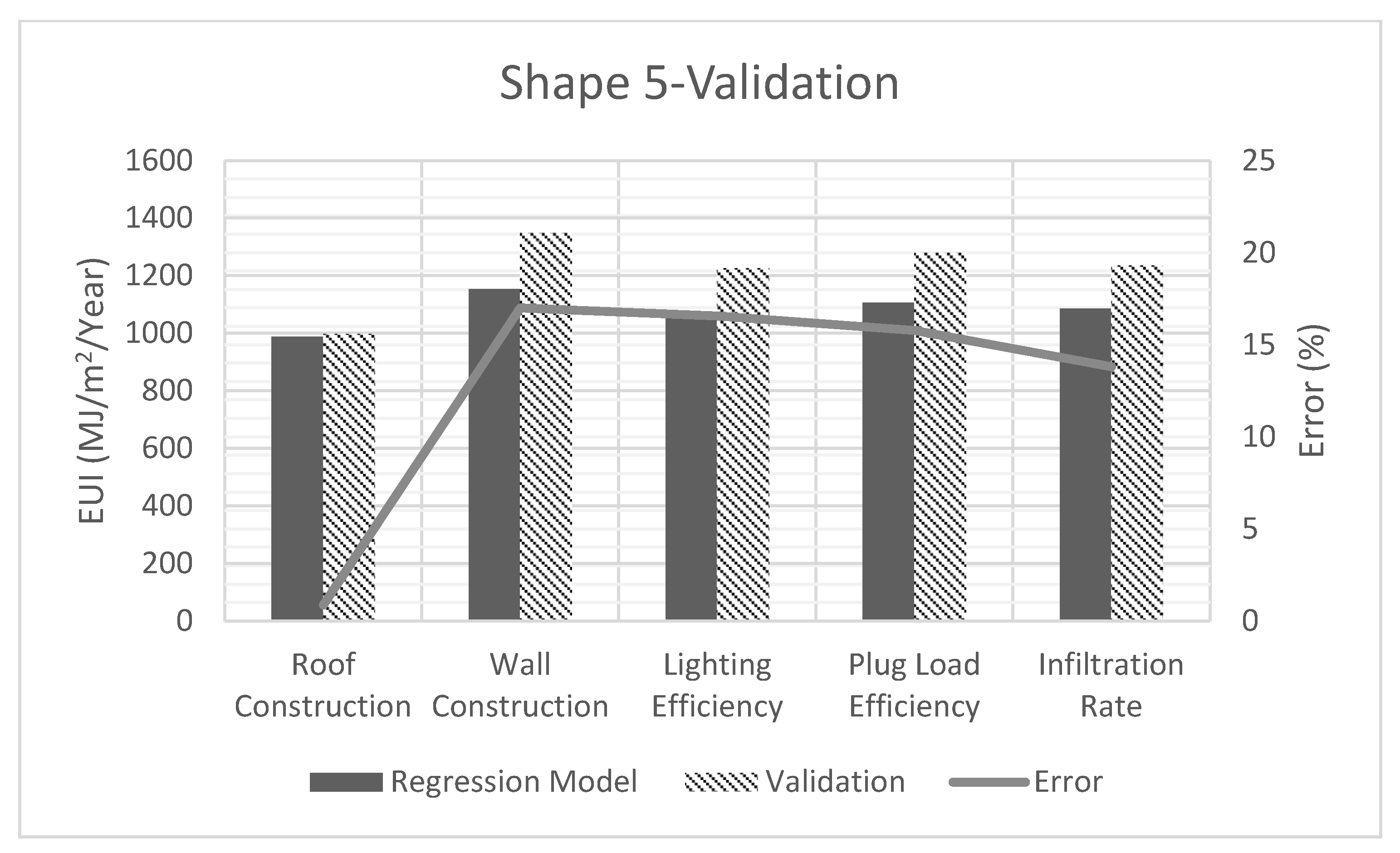

| Data Type | Case Study 1 | Case Study 2 | Case Study 3 | ||
|---|---|---|---|---|---|
| Revit-GBS | Revit-gbXML | gbXML-OpenStudio | OpenStudio-IDF | GBS-IDE | |
| Weather File Schedules | Automatically obtained through the location button in Revit Transfers | N/A | Requires manual input | N/A | Requires manual input |
| Schedule | Transfers | Transfers | Does not transfer and manually added using GUI | Transfers | N/A |
| Constructions | Complete transfer, GBS divides surfaces to sub-surfaces based on the energy analytical model | N/A | Complete and correct transfer | N/A | Transfers |
| Loads | Transfers | Does not Transfer | Does not transfer and manually added using GUI | Transfers | Transfers |
| Space Types | Transfers | N/A | Transfers | N/A | Transfers |
| Building Information | Transfers | Transfers | Partial Transfers For example, typical floor height is not transferred | Transfers | Transfers |
| Thermal Zones | Transfers thermostat set points based on default values | Does not transfer | Does not transfer and manually added using GUI | Transfers | N/A |
| HVAC | Transfers | Does not transfer | Does not transfer and manually added using GUI | Transfers | Transfers |
| Author | Case Study | Modelling Technique | Findings |
|---|---|---|---|
| Mottahedia, M Mohammadpour, A Amiri, S, S Riley, D Asadi, S | Annual energy consumption of a typical office building with seven different building shapes in two different climates [24] | e-Quest and DOE-2: used to generate building energy model. MLR: used to predict total energy consumption in a linear equation. Coefficient determination (R2), F-test, and root mean squared error (RMSE): used to discuss the accuracy of regression models. | Space heating is the main source of energy consumption in the polar climate zone. T-shape buildings consume the most energy in both cold–dry and warm–marine climates. |
| Mottahedia, M. Asadi, S. Amiri, S. | Development of a Multiple Linear Regression Model to assess energy consumption in the early stage of commercial buildings design [29] | Monte Carlo Analysis: used to estimate the probability of getting acceptable results. eQuest and DOE-2: used to create and simulate modelling. MLR: used to identify the relationship between independent variables and the dependent variable. F-test, and RMSE: used to tell whether the design variables are significant | 1. A basic framework is developed to link the regression model with the BIM simulation tool. 2. The errors between DOE simulation and regression prediction are within 5%. |
| Aghdaei, N Kokogiannakis, G Mccarthy, T | Prediction of annual heating and cooling demand in three types of Australian dwellings [30] | MLR with ANOVA approach: used to predict annual heating and cooling demand. Building Energy simulation method (not specified): used to verify the prediction results. Sensitive analysis: used to identify the most influential parameters. | The error between energy simulation and prediction results is less than 15%. R2 was over 0.90, indicating a good agreement between the simulation and regression model. |
| González, J. Alberto, P. Soares, C, A, P. Najjar, M. Haddad, A, N. | BIM and BEM methodologies integration in energy-efficient buildings using experimental design [31] | AutoCAD Revit: used to define a physical model and perform model integration. GBS: used to run the generated model 42 times. Regression Models developed by Minitab software with p-value: used to determine the representativeness of the buildings | The higher the efficiency of lighting and applications, the lower the electric demand. The lack of information about thermal material properties affects the accuracy of the simulation. |
| Name | Function |
|---|---|
| Autodesk AutoCAD [35] | Drawing an approximate 2D plan of the TETB based on photos taken during the site investigation |
| Autodesk Revit [36] | Creating 3D solid building models based on the 2D CAD drawing created in the above stage |
| Autodesk Insight 360 [37] | Providing visual data and 3D analytical models |
| Autodesk GBS [38] | Acting as the back engine of Insight 360, providing detailed numerical data |
| Energy Settings | ||
|---|---|---|
| Energy modelling mode | Use Conceptual Masses and Building Elements | Default |
| Building Service | VAV—Single Duct | Default |
| Building Type | School or University | TETB is located in UNSW, which is a university facility |
| Building Operating Schedule | Default | Default |
| HVAC System | Central VAV, HW Heat, Chiller 5.96 COP, Boilers 84.5 Eff | Default |
| Export Category | Rooms | Each shape of the room has the same room area of 20 m2 |
| Analysis Properties | |
|---|---|
| Roofs | 4 in lightweight concrete (U = 1.275 W/(m2·K)) |
| Exterior Walls | 8 in lightweight concrete block (U = 0.8108 W/(m2·K)) |
| Interior Walls | Frame partition with ¾ in gypsum board (U = 1.4733 W/(m2·K)) |
| Ceilings | 8 in the lightweight concrete ceiling (U = 1.3610 W/(m2·K)) |
| Floors | Passive floor, no insulation, tile, or vinyl (U = 2.9582 W/(m2·K)) |
| Slabs | Un-insulated solid (U = 0.7059 W/(m2·K)) |
| Doors | Metal (U = 3.7021 W/(m2·K)) |
| Exterior Windows | Large double-glazed windows (reflective coating), industry (U = 2.9214 W/(m2·K)) |
| Interior Windows | Large single-glazed windows (U = 3.6898 W/(m2·K), SHGC = 0.86) |
| Skylights | Large double-glazed windows (reflective coating), industry (U = 3.1956 W/(m2·K)) |
| Building Internal Variables | Description |
| Wall Construction Type (WCT) |
|
| Roof Construction Type (RCT) |
|
| Window-to-Wall Ratio (WWR) |
|
| Building Orientation (ORI) |
|
| Infiltration (INF) |
|
| Lighting Efficiency (LIG) |
|
| Daylighting and Occupancy Control (DOC) |
|
| Plug Load Efficiency (PLE) |
|
| HVAC System (HVAC) |
|
| Operating Schedule (OPS) |
|
| Min/Max Internal Loads |
|
| Min/Max Envelop | |
| Min/Max Form |
| WWR Internal Influencing Elements | |
|---|---|
| Window Shading | 100.0% (No change); 66.7% (2/3 Window); 33.3% (1/3 Window) |
| Window Orientation (degrees) | 0° (North); 90° (East); 180° (South); 270° (West) |
| Window Glass Type (U-Value) | 2.98 (No change); 6.17 (Single Clr); 2.74 (Double Clr); 1.99 (Double LoE); 1.55(Triple LoE) |
| Window-to-Wall Ratio | 95%; 65%; 30%; 0% |
| Internal Elements | Window Glass Type | Window-to-Wall Percentage | Window Orientation | Window Shading |
|---|---|---|---|---|
| Adjusted R-square when dropping an element | 0.198 | 0.0903 | 0.268 | 0.279 |
| Change (%) Datum: 0.298 | 91.9 | 71.2 | 4.66 | 0.71 |
| Shape-1 | Shape-2 | Shape-3 | Shape-4 | Shape-5 | Shape-6 | |
|---|---|---|---|---|---|---|
| 1130.7 | 1115.6 | 1150.1 | 1192.9 | 1177.8 | 1133.9 | |
| (Glass Type) | −13.135 | −12.018 | −12.97 | −9.1958 | −8.6853 | −11.574 |
| (Window-to-Wall Percentage) | 120.57 | 110.6 | 117.87 | 102.57 | 101.38 | 104.27 |
| (Building Orientation) | 0.09186 | 0.24142 | −0.089786 | −0.45074 | −0.44391 | 0.036913 |
| RMSE | 60.5 | 58.2 | 66.8 | 57.1 | 58.7 | 49.4 |
| Adjusted R-Square | 0.285 | 0.34 | 0.237 | 0.475 | 0.452 | 0.303 |
| F-test p-value | 1 × 10−13 | 8.88 × 10−17 | 3.27 × 10−11 | 1.09 × 10−25 | 4.8 × 10−24 | 1.13 × 10−14 |
| Shape 1 | Shape 2 | Shape 3 | Shape 4 | Shape 5 | Shape 6 | |
|---|---|---|---|---|---|---|
| α | 1145.9 | 1147.7 | 1138.3 | 1143.1 | 1128.7 | 1143.3 |
| β1 | 61.176 | 53.709 | 58.039 | 51.088 | 48.889 | 51.941 |
| RMSE | 20.3 | 17.0 | 19.1 | 16.8 | 15.8 | 16.7 |
| Adjusted R-Squared | 0.861 | 0.872 | 0.863 | 0.863 | 0.868 | 0.868 |
| F-test p-value | 3.89 × 10−7 | 2.24 × 10−7 | 3.47 × 10−7 | 3.43 × 10−7 | 2.76 × 10−7 | 2.74 × 10−7 |
| Shape 1 | Shape 2 | Shape 3 | Shape 4 | Shape 5 | Shape 6 | |
|---|---|---|---|---|---|---|
| α | 986.24 | 992.23 | 981.43 | 987.67 | 975.97 | 985.55 |
| β1 | 28.809 | 29.465 | 28.7 | 29.422 | 29.625 | 29.474 |
| RMSE | 1.7 | 2.01 | 1.89 | 1.96 | 1.98 | 1.95 |
| Adjusted R-Squared | 0.996 | 0.995 | 0.996 | 0.995 | 0.995 | 0.995 |
| F-test p-value | 9.66 × 10−19 | 7.39 × 10−18 | 4.42 × 10−18 | 5.46 × 10−18 | 5.43 × 10−18 | 4.86 × 10−18 |
| Shape 1 | Shape 2 | Shape 3 | Shape 4 | Shape 5 | Shape 6 | |
|---|---|---|---|---|---|---|
| α | 922.22 | 917.8 | 914.39 | 909.17 | 889.26 | 908.71 |
| β1 | 11.502 | 11.880 | 11.593 | 12.015 | 12.353 | 11.963 |
| RMSE | 1.53 | 3.78 | 2.08 | 3.89 | 4.16 | 3.82 |
| Adjusted R-Squared | 1.0 | 0.998 | 0.999 | 0.998 | 0.998 | 0.998 |
| F-test p-value | 2.13 × 10−8 | 6.96 × 10−7 | 7.04 × 10−8 | 7.41 × 10−7 | 8.7 × 10−7 | 7.02 × 10−7 |
| Shape 1 | Shape 2 | Shape 3 | Shape 4 | Shape 5 | Shape 6 | |
|---|---|---|---|---|---|---|
| α | 958.11 | 957.68 | 951.51 | 949.48 | 930.77 | 948.9 |
| β1 | 11.531 | 11.630 | 11.532 | 11.751 | 12.102 | 11.706 |
| RMSE | 0.389 | 0.842 | 0.308 | 1.59 | 2.49 | 1.17 |
| Adjusted R-Squared | 1.0 | 1.0 | 1.0 | 1.0 | 0.999 | 1.0 |
| F-test p-value | 3.37 × 10−8 | 3.32 × 10−7 | 1.68 × 10−8 | 2.15 × 10−6 | 7.65 × 10−6 | 8.82 × 10−7 |
| Shape 1 | Shape 2 | Shape 3 | Shape 4 | Shape 5 | Shape 6 | |
|---|---|---|---|---|---|---|
| α | 1091.9 | 1092 | 1085 | 1085.7 | 1072.9 | 1083.2 |
| β1 | 37.635 | 38.035 | 38.089 | 36.804 | 32.465 | 40.094 |
| RMSE | 0.433 | 0.398 | 0.458 | 0.441 | 2.18 | 0.319 |
| Adjusted R-Squared | 1.0 | 1.0 | 1.0 | 1.0 | 0.991 | 1.0 |
| F-test p-value | 1.7 × 10−8 | 1.16 × 10−8 | 2.03 × 10−8 | 2 × 10−8 | 1.96 × 10−5 | 3.91 × 10−9 |
| Façade and Roof Type | U-Value (W/M2·K) | Reference |
|---|---|---|
| External Wall Façade—1 | 0.500 | Burgun, Bilbao [50] |
| External Wall Façade—2 | 0.333 | |
| Lighting and Plug Load Efficiency | Intensity (W/sqm) | Reference |
| Lighting Efficiency (Power density) | 10 | UNSW [51] |
| Plug Load Efficiency (Power Load) | 17.5 | Dunn and Knight [52] |
| Infiltration Rate | Air Change Per Hour (ACH) | Reference |
| Infiltration Rate (Air Leakage Rate) | 0.4 | Speert and Legge [53] |
Disclaimer/Publisher’s Note: The statements, opinions and data contained in all publications are solely those of the individual author(s) and contributor(s) and not of MDPI and/or the editor(s). MDPI and/or the editor(s) disclaim responsibility for any injury to people or property resulting from any ideas, methods, instructions or products referred to in the content. |
© 2023 by the authors. Licensee MDPI, Basel, Switzerland. This article is an open access article distributed under the terms and conditions of the Creative Commons Attribution (CC BY) license (https://creativecommons.org/licenses/by/4.0/).
Share and Cite
Tahmasebinia, F.; He, R.; Chen, J.; Wang, S.; Sepasgozar, S.M.E. Building Energy Performance Modeling through Regression Analysis: A Case of Tyree Energy Technologies Building at UNSW Sydney. Buildings 2023, 13, 1089. https://doi.org/10.3390/buildings13041089
Tahmasebinia F, He R, Chen J, Wang S, Sepasgozar SME. Building Energy Performance Modeling through Regression Analysis: A Case of Tyree Energy Technologies Building at UNSW Sydney. Buildings. 2023; 13(4):1089. https://doi.org/10.3390/buildings13041089
Chicago/Turabian StyleTahmasebinia, Faham, Ruihan He, Jiayang Chen, Shang Wang, and Samad M. E. Sepasgozar. 2023. "Building Energy Performance Modeling through Regression Analysis: A Case of Tyree Energy Technologies Building at UNSW Sydney" Buildings 13, no. 4: 1089. https://doi.org/10.3390/buildings13041089
APA StyleTahmasebinia, F., He, R., Chen, J., Wang, S., & Sepasgozar, S. M. E. (2023). Building Energy Performance Modeling through Regression Analysis: A Case of Tyree Energy Technologies Building at UNSW Sydney. Buildings, 13(4), 1089. https://doi.org/10.3390/buildings13041089








